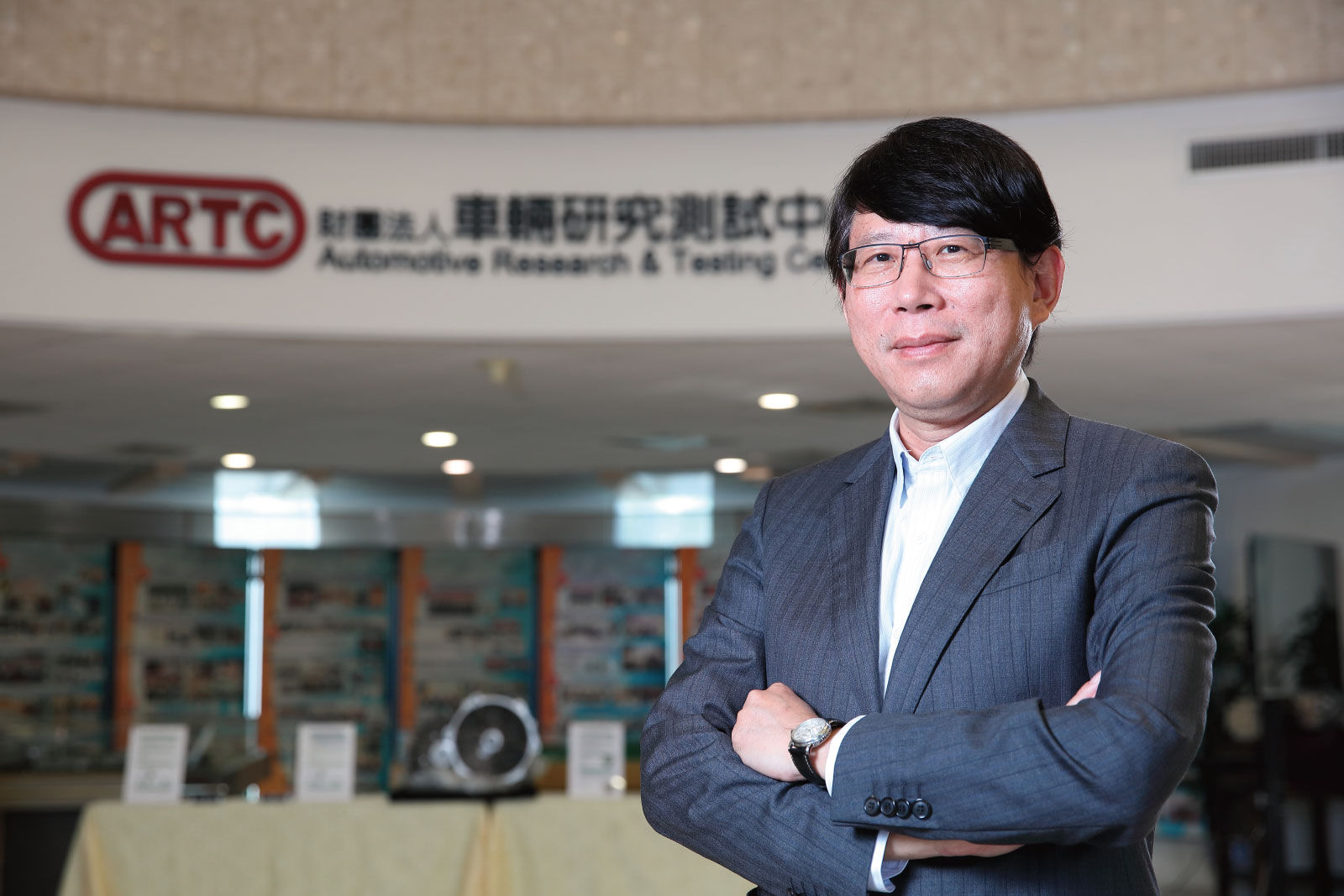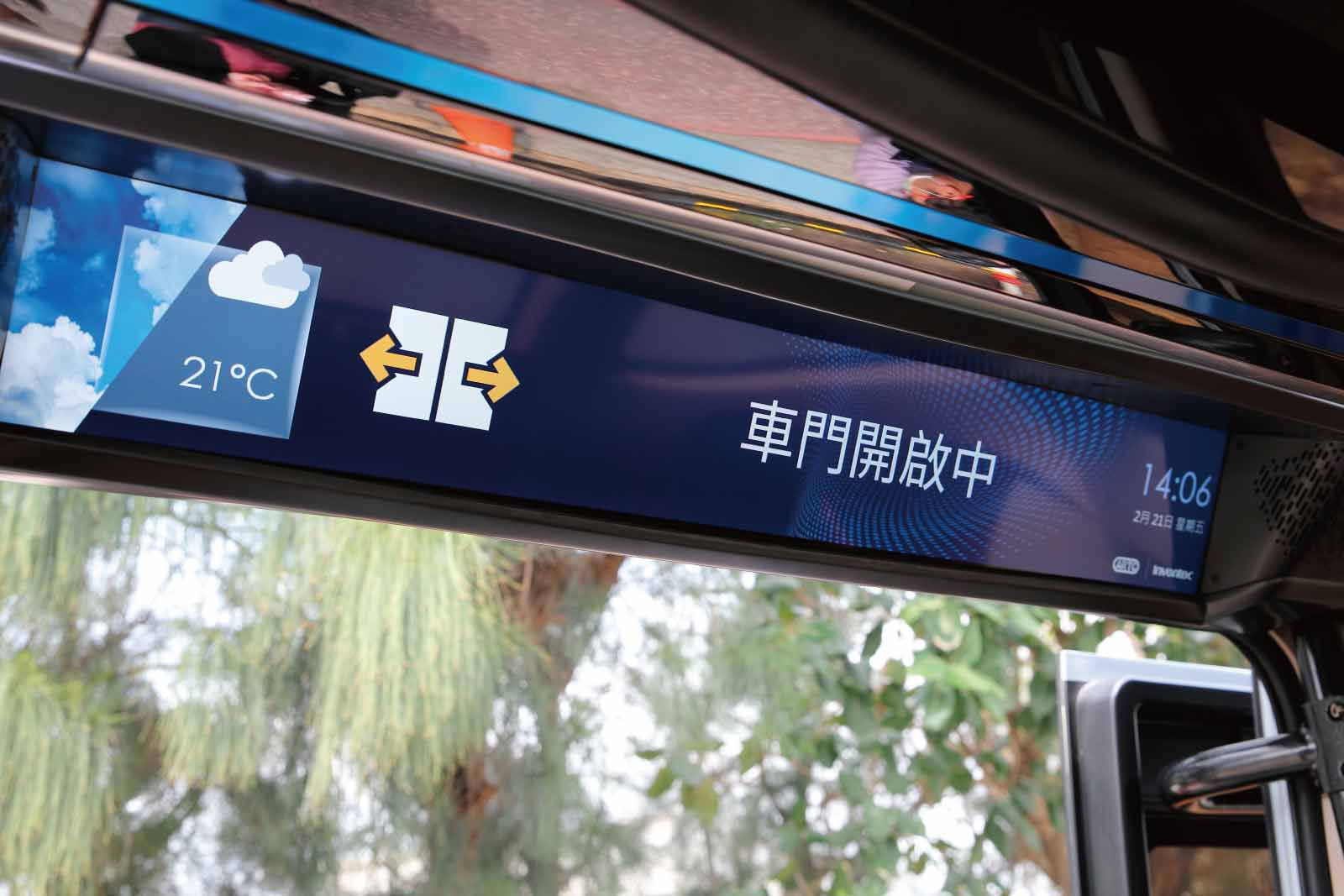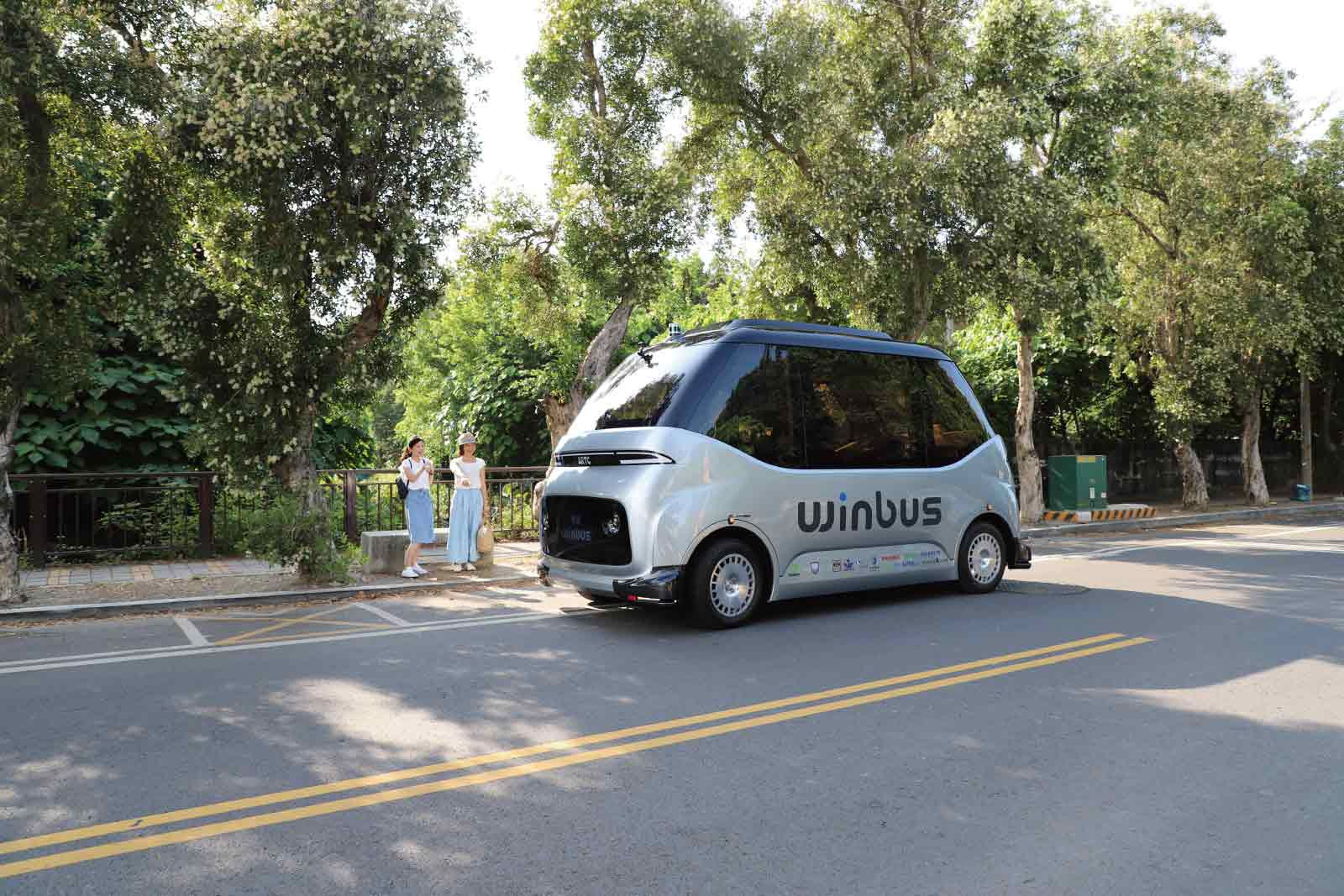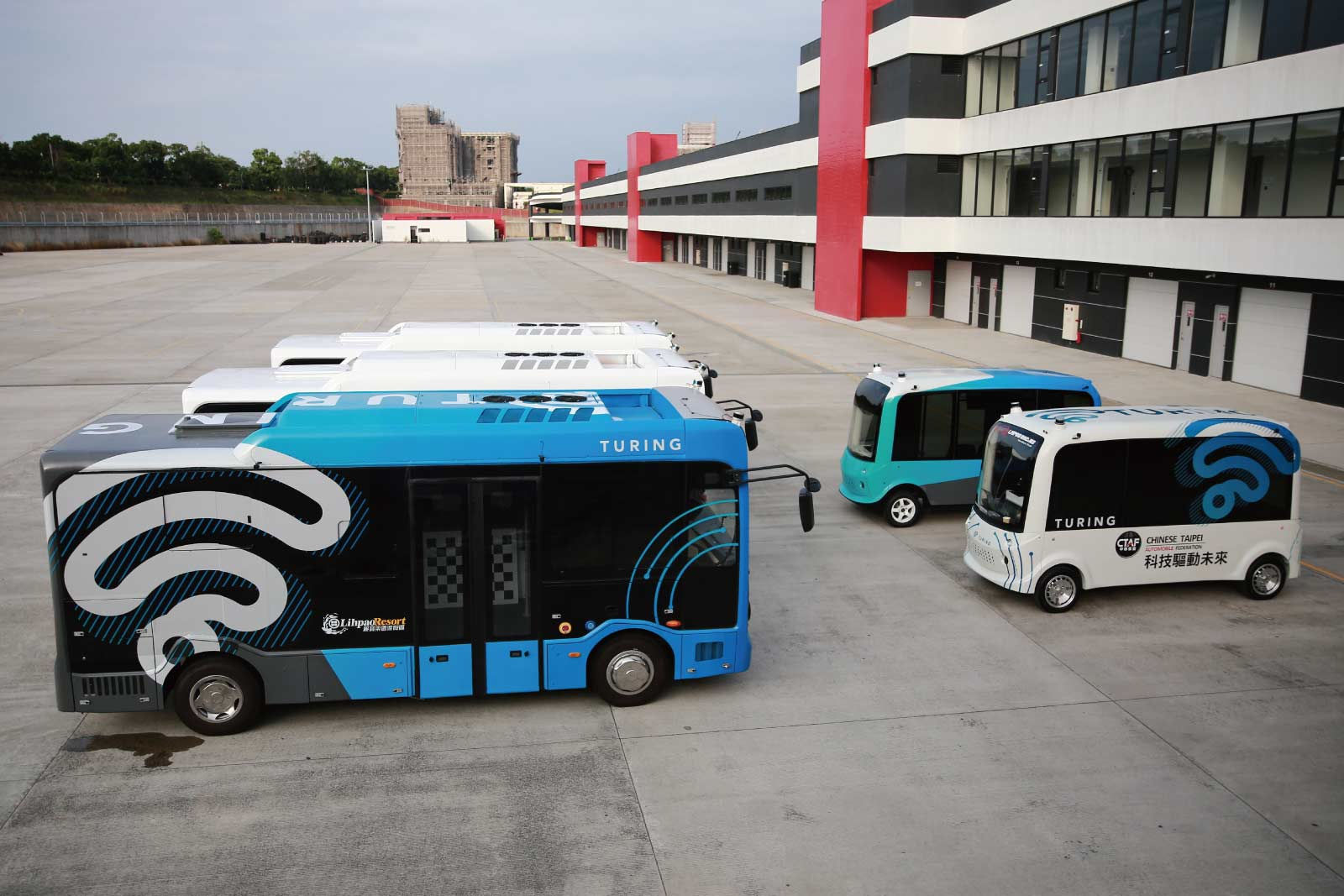Taiwanese enterprises cooperate in self-driving trends
MIT Self-Driving Buses Drive You into a Smart Future

Source:Transportation and Communication (MOTC)
Self-driving smart technology has created a fad, sweeping the world with the development of self-driving vehicles. German Association of the Automotive Industry (VDA) suggests that solving metropolitan transportation issues by combining zero-carbon emission, green electric vehicle, and self-driving technology will eventually change the look of transportation.
Views
MIT Self-Driving Buses Drive You into a Smart Future
By Transportation and Communication (MOTC)Sponsored Content
Optimistic about new opportunities and industry strengths, Taiwanese enterprises are forming MIT national teams and participating in the assembly of self-driving vehicle through cooperating with government ministries and the support of local governments. Enterprises unfold point-to-point transportation services via self-driving buses in tourist areas, communities, and campuses.
Self-driving vehicles operate with stability and a new look for public transportation in Taiwan.
Low-carbon and smart transportation now has become a part of life in many developed cities. Particularly, self-driving vehicle technology draws global attention and appeals to major car makers in Europe and the U.S. These companies make major investments in Taiwan while Taiwan strives to advocate MIT self-driving buses on this wave.
Featuring the brain of high-level computation and eyes formed by radar, LIDAR and lenses, technology invigorates lifeless self-driving vehicles with souls and drives to the future of intelligent transportation.
In response to the global trend of self-driving vehicles and in support of industry technology and innovative services, the government has promulgated the Unmanned Vehicles Technology Innovative Experimentation Act in 2018, in addition to completing and promulgating the relevant branch laws in the following year. The idea of regulation lifting through regulatory sandbox provides more opportunities for emerging unmanned vehicle technology to conduct testing under safe and controllable environments.
The Automobile Research Testing Center (also known as ARTC) linked the industries to build and release the self-driving electric minibus – WinBus last August. This year, this independently developed MIT self-driving electric bus designed by Taiwanese enterprises has applied for the unmanned vehicle technology innovative experimentation. The experiment features the theme for smart tourism transportation of Lugang Zhang Bin to be launched in Zhangbin Industrial Park.
ARTC and Taiwanese enterprises build self-driving vehicles from scratch
“Taiwan owns one of the most comprehensive industry chains in the self-driving vehicles. Its biggest advantages include technology and talented people,” pointed out by ARTC President Jerry Wang. Top-notch enterprises and talents come together, ranging from manufacturing technology, automobile electronics, battery technology, and semiconductor components to system integration. “The hybrid and complex road environment of cars and scooters in Taiwan offers the most ideal field for conducting self-driving vehicle experiment.”

(ARTC President Jerry Wang )
Electric Bus – WinBus is supported by the Technology Project from Technology Development Program by Ministry of Economic Affairs. ARTC connects chassis, power, electricity, vehicle unit building, perception, and decision-making control, internet of vehicles, operation services, and more than 20 Taiwanese enterprises jointly build the WinBus model. Currently, KINGWAYTEK, Mobile Business Group of Chung Hwa Telecom, and ACER ITS have formed a team for operation. With the highest speed reaching 50KM per hour, WinBus is loaded with the auxiliary system and key components required for self-driving. The level of self-driving capacity also conforms to Level 4 of Society of Automotive Engineers (SAE) and can autonomously complete all driving and environmental monitoring in fixed fields.

(Provided by ARTC)

(Provided by ARTC)
WinBus does not come with a steering wheel, driver’s seat, brake, or gas pedal. Instead, WinBus appeals in a U-shaped passenger seats, touch-panel screen and information panel, ticketing sensor, air conditioner, and safety equipment. When the vehicles start moving, the images captured by the camera, LIDAR detected profile, distance of objects in front, and radar, GPS system for positioning will all be activated to detect and identify the surrounding environment. The vehicle operates with precise calculation,” explained ARTC R&D Department Manager Wen-Xien Hsu in details.
For the next step, WinBus will operate in the open roads of Changbin Industrial Park with genuine traffic scenarios. WinBus will strengthen the self-driving system of the vehicle and smart road facilities, as well as implement collaboration on the management platform. President Jerry Wang expressed: “Apart from strengthening authentication and road testing, we also need to take into consideration of how to lower the production cost for every vehicle in order to build a more complete new-generation self-driving electric bus with a higher added value, so that it will then be able to offer services to more people.
Innovative teams also compete for market share with optimistic view on the international trends
Coincidentally, another unmanned vehicle technology innovative experimentation will also unfold. Taipei City Government and Turing Drive – an innovative Taiwanese company, also collaborate by applying self-driving bus testing on the designated bus routes on Xinyi Road, Taipei City at night. This project is divided into three stages, beginning from the high-definition maps, smart road facilities, charging stations, and roadside safety sign to the self-driving bus operation test, and eventually opening to loading passengers at night. The project will be offered to the public for test drive in the second half of the year.
Soon in May, there will be self-driving buses of two sizes, 4 meters and 6 meters, on a trial-run on the designated bus route of Taipei City in early morning. The launch of this project will further examine the gap in night-time public transportation and the feasibility of making up for inadequate driving manpower, which is also expected to promote the innovative application and upgrade of self-driving technology in Taiwan.

(Provided by Turing Drive)
The self-driving bus built by Turing Drive uses about 70% of hardware and software made in Taiwan. Apart from building the vehicle body with Tron Energy, ThinkTron Ltd. responsible for map information, WHETRON ELECTRONICS CO., LTD. offering sensor while Trillion Power taking charge of vehicle x-by-wire. Turing Drive also introduces NVIDIA Drive from abroad and continues to conduct 13 road scenario tests, including the crossroad, pedestrian crossing, smart bus waiting stop, parallel parking, roundabout, curve, railroad crossing, and tunnel, in the Turing Drive testing experiment base next to the THSR Shalun Station.
Turing Drive is currently taking the initiative in establishing service performance in Taiwan and all over Asia, including the 2018 and 2019 Taoyuan Agriculture Expo, Grand Hotel in Taipei, Lihpao Resort in Taichung, and Taoyuan—Qingpu. The actual operating mileage exceeds 18,000 kilometers with services provided to 57,000 passengers. Moreover, the company is moving towards global market, including the seven-year self-driving vehicle operation cooperation project in Singapore, to compete with globally renowned tier-1 self-driving companies.
Meanwhile, Turing Drive upholds to the spirit of “Autonomous for All” by applying its core technology accumulated from the development process of self-driving bus to various unmanned vehicles. Turing Drive Chairman Huber Chen suggested that street sweeping truck operating at midnight can substantially enhance night-time operation efficiency and reduce manpower demand. The agricultural machine with self-driving technology can cope with the struggle for the loss of global agricultural population. Moreover, the image imagination of the team, object tracing, sensor integration, parallel algorithm, positioning, navigation, and several other technology, are all extensively applied to transportation, green energy, and smart manufacturing fields, where changes continue to take place.






